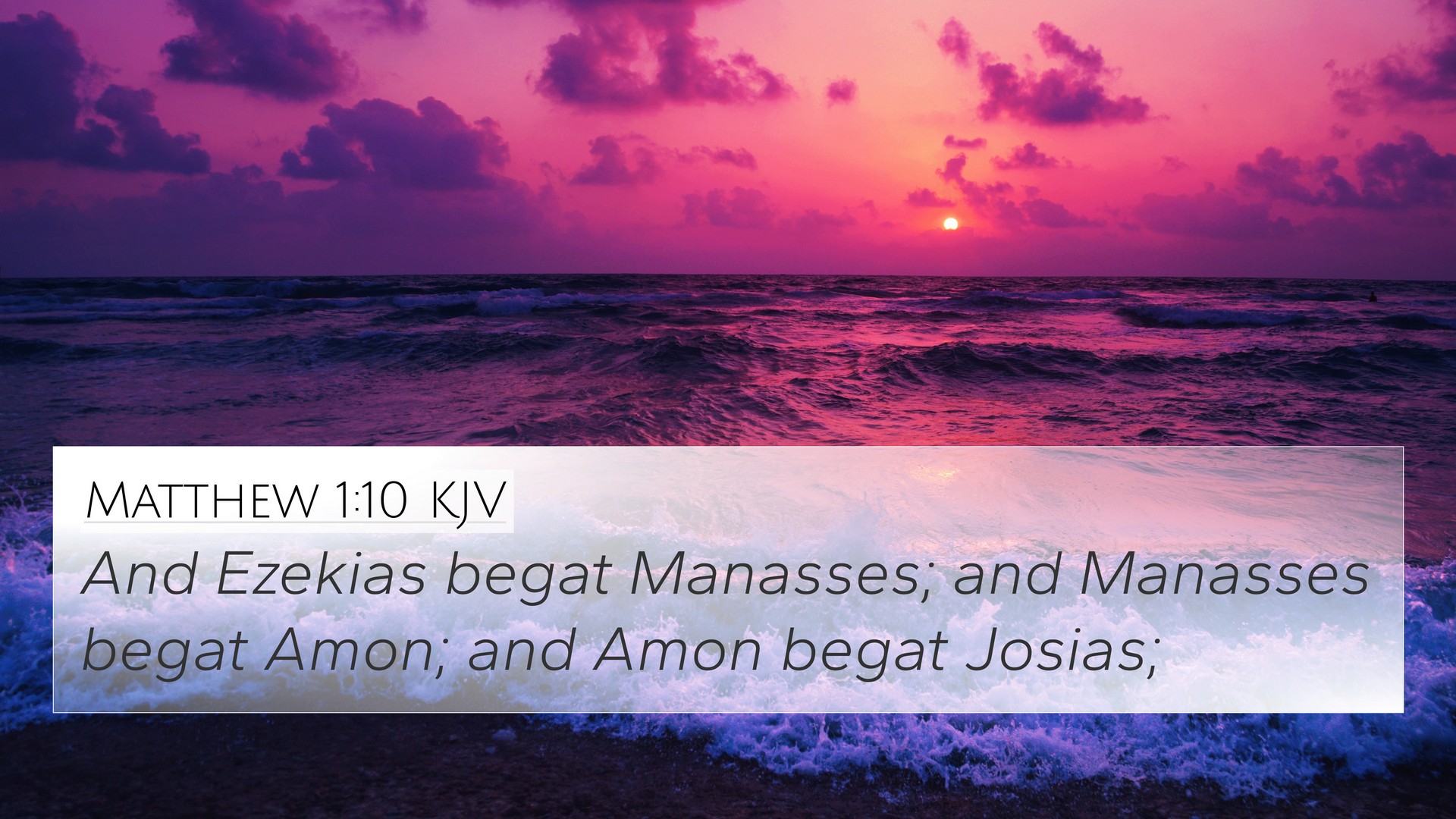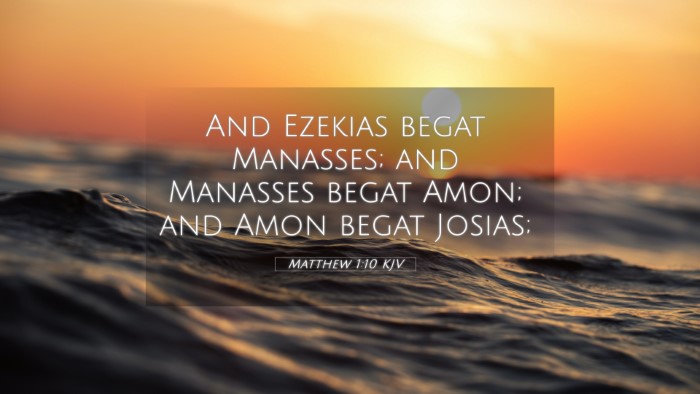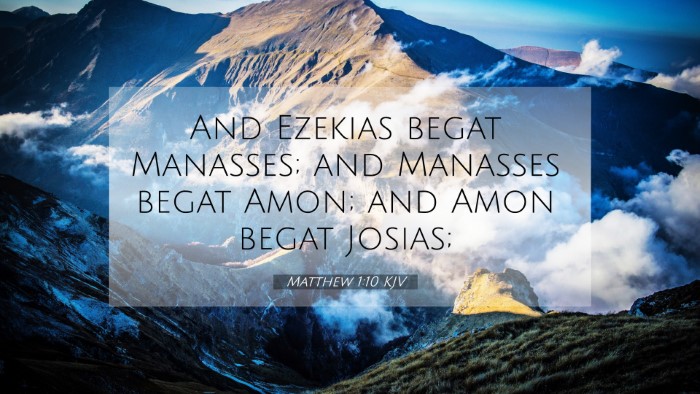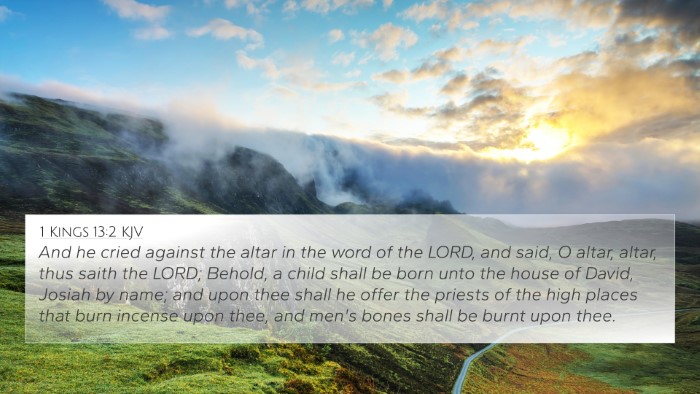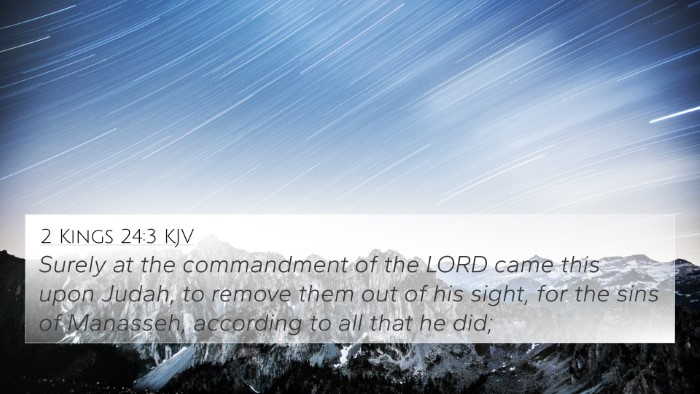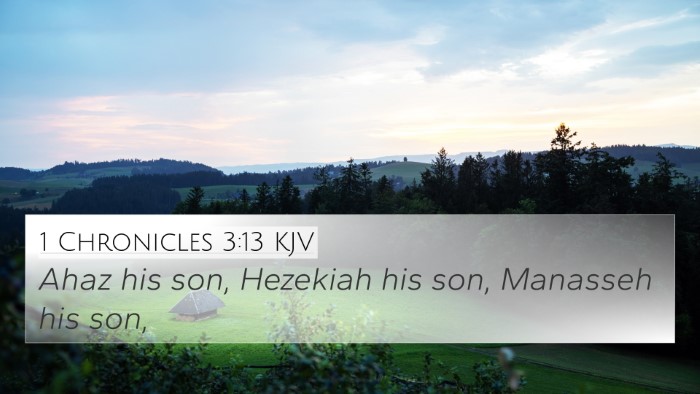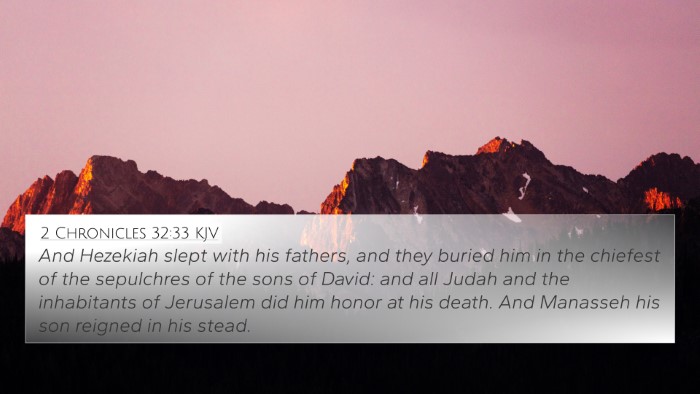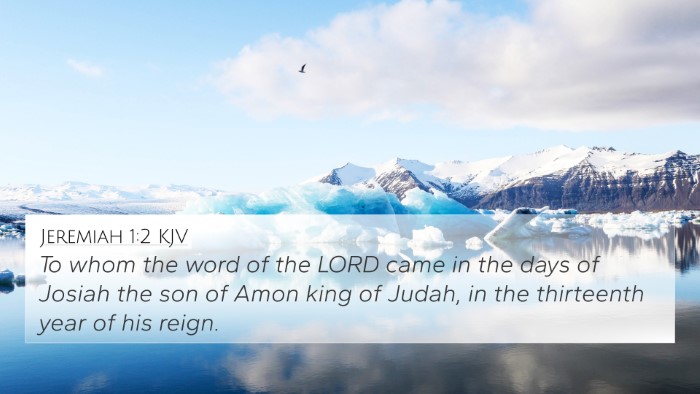Understanding Matthew 1:10
Matthew 1:10 reads: "And Heze kiah begat Manasseh; and Manasseh begat Amon; and Amon begat Josiah."
This verse is a part of the genealogy of Jesus Christ, which is presented in the opening chapter of Matthew. It highlights significant figures in Jewish history and their roles leading to Christ's birth. The mention of these kings emphasizes the royal lineage, establishing Jesus' legitimacy as a descendant of David.
Historical Context
Matthew includes this genealogy to validate Jesus' messianic credentials. By linking Jesus to notable kings of Judah, particularly through Hezekiah to Josiah, Matthew demonstrates God's continual covenant with Israel, as well as the hope of restoration post-exile.
Analysis from Public Domain Commentaries
Matthew Henry's Commentary
Matthew Henry notes that the genealogy indicates the progress of God's promise, showing how God prepared the way for the coming of the Messiah through various leaders in Israel. The noted kings—especially Hezekiah, known for his faithfulness to God and reforms—serve as exemplars of the kind of leadership God desires.
Albert Barnes' Commentary
Barnes highlights the sinful nature of Manasseh, contrasting it with the righteousness of his son Amon and grandson Josiah. This contrast serves as a reminder of God's mercy and the potential for redemption in the lineage leading to Jesus. It indicates that despite failures, God’s plan of salvation remains intact.
Adam Clarke's Commentary
Clarke points out that each name in the genealogy carries theological weight, representing the unfolding of God's redemptive history. He emphasizes the importance of Manasseh's repentance and how God's grace reached even the most wayward kings. This acts as a beacon of hope for all, reflective of the salvation Jesus will ultimately provide.
Cross-Referencing Biblical Texts
This verse can be enriched through cross-references that connect it to other scriptures, illustrating the broader narrative of God's plan. Here are some related verses:
- 2 Kings 21:1-16 - A detailed account of Manasseh's reign and his subsequent repentance.
- 2 Chronicles 33:1-20 - A parallel narrative showcasing the redemption of Manasseh.
- Isaiah 39:5-7 - Prophecies relating to the descendants of Hezekiah.
- Jeremiah 1:1-3 - Mentions Josiah during the time of prophetic ministry, signaling reform.
- Luke 3:31-34 - Another genealogy of Jesus that includes some of the same figures and highlights His lineage.
- Matthew 22:42 - Discussion on Jesus being the Son of David, reinforcing the importance of the genealogy.
- Romans 5:20 - Illustrates how grace abounds where sin increased, linking to the ineffable grace evident in the genealogy.
Thematic Connections
The genealogy in Matthew 1:10 emphasizes key theological themes:
- The Sovereignty of God: Each name signifies God's control in history.
- Redemption and Grace: The good and the bad in the lineage reflect God's ability to redeem.
- The Fulfillment of Promises: Links to Old Testament prophecies about the coming Messiah.
Conclusion
Matthew 1:10 is more than a historical account; it encapsulates the heart of God's plan for salvation through Jesus Christ. Through cross-referencing this passage with other biblical texts, one can appreciate the continuity and theme of grace that runs through the scriptures. This inter-Biblical dialogue enriches our understanding, encouraging deeper study and reflection on the nature of God's promises.
